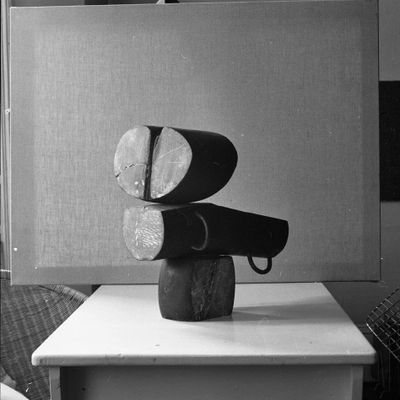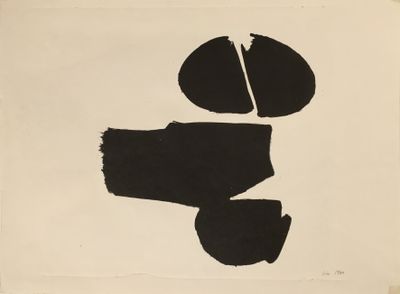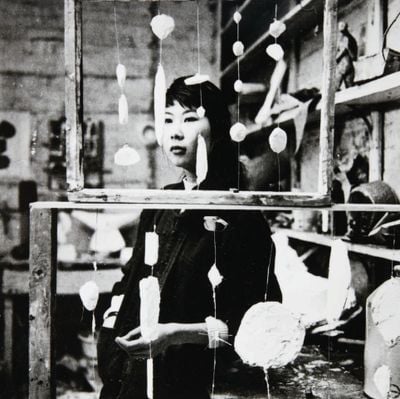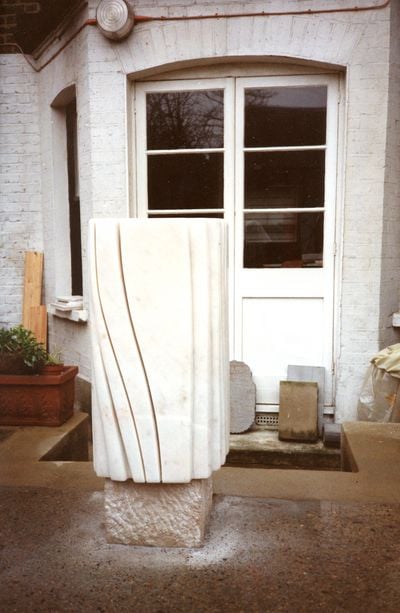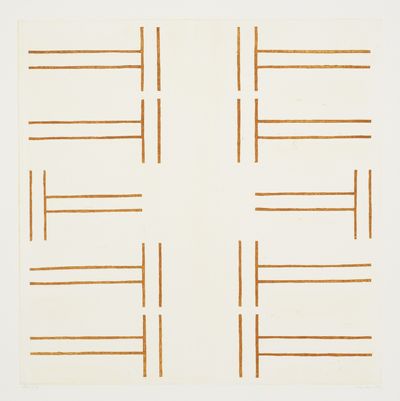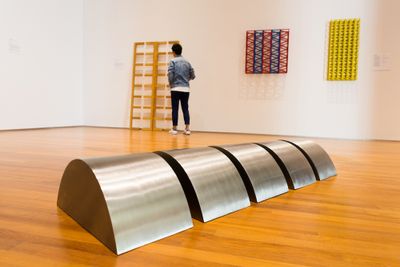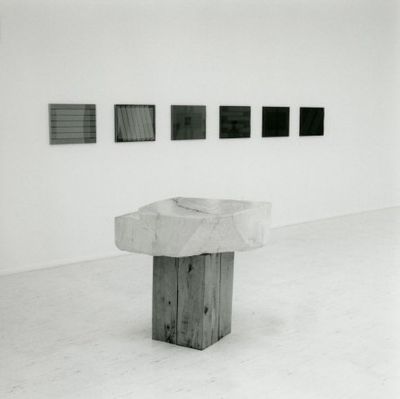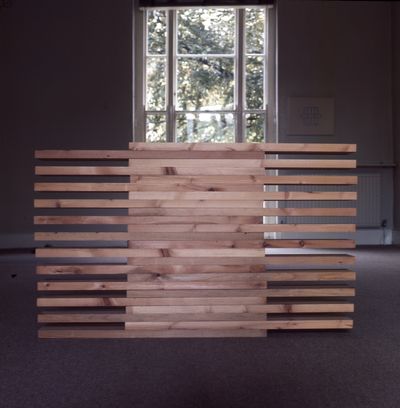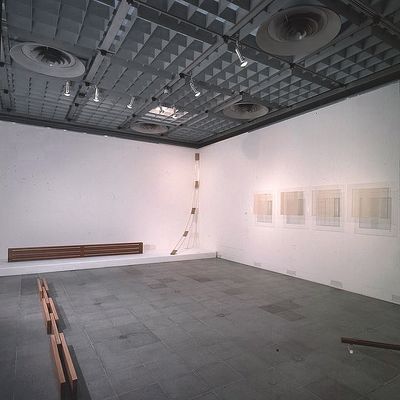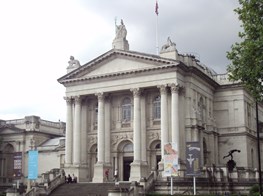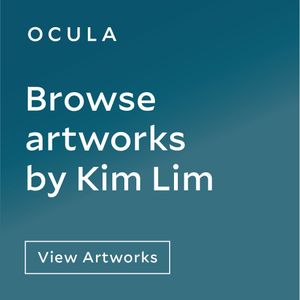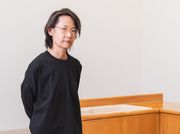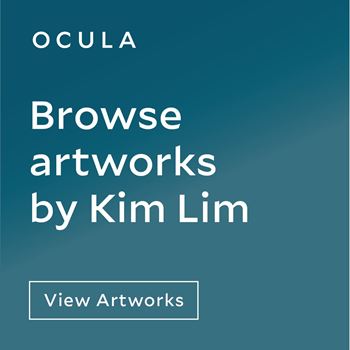Kim Lim in Her Own Context
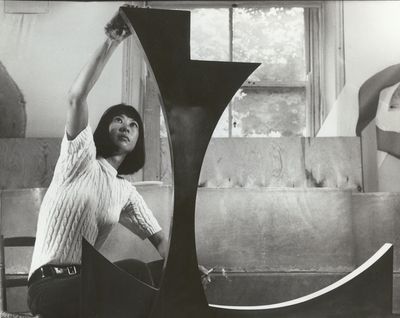
Kim Lim in her studio, London (1966). Courtesy Turnbull Studio.
In 1954, Kim Lim left her native Singapore for Britain with the sole aim to become an artist. In London, she enrolled at St. Martin's School of Art and later the Slade, studying printmaking and sculpture—two approaches that form the basis of the artist's collection spotlight at Tate Britain, Kim Lim: Carving and Printing, more than 20 years after her passing in 1997.
On view through 5 March 2021, works from as early as 1958 to 1974 are exhibited alongside each other, revealing the symbiotic relationship that printmaking had with Lim's sculptural practice.
Appearing for the first time together, for example, are iterations of Sphinx in both paper and wooden form. Carved from what appears to be 'found' wood, the sculpture is comprised of three elements, resting one on top of the other. The lithograph presents a side-angle view of the sculpture, with the three key elements teetering and even at times not touching.
Lim's equal passion for print-making and carving resulted in an integration of forms in the two-dimensional and the three-dimensional, often one informing the other. It is interesting to note that the sculpture Sphinx (1959) predates the lithograph on paper, which was executed a year later. 'Through printing, Lim explored forms and ideas that she continued to develop in the slower process of wood carving', writes curator Elena Crippa. 'Likewise, ideas that first appeared in sculpture informed new explorations in printmaking.'1
Lim was concerned with the principles of light, form, rhythm, and space, and these concepts outweighed notions of volume and mass. Early works like Abacus I and II (1959), two sister relief sculptures modelled after the ancient Chinese calculation tool, employ a poverty of material that demonstrates an ability to transform shapes and concepts with simplicity and elegance.
Made of plaster and hung on wire within a rectangular wooden frame, these works, now held in the collections of the National Gallery Singapore and M+ Museum in Hong Kong respectively, eschew 'high art' material for simplicity.
But while Lim indeed extracted inspiration from her own personal journey from East to West, including the vernacular of artists she admired such as Alberto Giacometti and Constantin Brancusi, she also looked outside the 'canon' of art.
A keen observer of nature and of natural forces, Lim would echo the sinuous curves of a vast desert plain, the waves of a sea breeze, and the strength of a gingko tree's trunk, as seen in the 1989 sculpture, Gingko, titled after this living fossil, in which a monolith of rose aurora marble fluted and carved by hand rests on a Portland stone base.
A sense of openness and mutability points to the various phenomenological experiences that Lim tapped into as the bedrock of her artistic creation. She described 'space as a physical substance'—'to be articulated, manipulated'—and talked about 'using space as intervals'. In turn, she understood the 'physicality of rhythm' as sculptural, encapsulated by 'light reflecting surfaces' and 'throwing shadows.'2
As the art world attempts to reconfigure art history to make space for new narratives, examining the life and work of Kim Lim in her own context and in the context of today's scholarship is vital.
The re-occurring motifs that punctuate Lim's practice—from the most concrete to the more abstract—reveal a close attention to what is not readily visible. The method and manner with which Lim drew these ideas through her chosen material remains one of the most compelling aspects of her practice.
In the case of Intervals I (1973), a wooden ladder-like form is composed of a central beam with evenly distributed perpendicular wooden slats cutting across the central plane; while Intervals II (1973) is comprised of two wooden parts that stand alone, echoing the forms of the lithograph Ladder Series II (1972), which is among the prints from the early 1970s flanking the sculptures in the Tate display.
The 'Interval' and 'Ladder' series as a conceptual framework and composition mark an important development within Lim's oeuvre, characterised by a continued concern with modulation, repetition, and rhythm. The 'Interval' sculptures, in all their various formulations, were exhibited in the seminal 1977 Hayward Annual exhibition in London.
In the last six years, Lim's work has undergone a surge in interest, with work exhibited in group exhibitions such as Suddenly Turning Visible: Art and Architecture in Southeast Asia (1969–1989) (19 November 2019–29 November 2020) at the National Gallery Singapore, and Objects of Wonder. British Sculpture from the Tate Collection 1950s – Present at Palais Populaire, Berlin (1 February–27 May 2019).
Yet this is only the beginning of the re-discovery of Kim Lim's artistic practice. As the art world attempts to reconfigure art history to make space for new narratives, examining the life and work of Kim Lim in her own context and in the context of today's scholarship is vital.
Despite Lim's work disappearing from visibility within the institutional framework for over 20 years—her last major London museum show was in 1999 at the Camden Art Centre—Lim's work remains an important signifier of the 1960s British art scene and indicates both the internationalism of that time, as well as the longevity of her artistic concerns.
The London art scene of Lim's time was ripe with experimentation and an international outlook; galleries like Signals, for example, which existed only for a brief time between 1964 and 1966, were bastions of experimental art. In addition to such artist-run spaces, a plethora of artists from across the world were artists settling in or stopping through London, often on their way to Paris. It is easy to limit the definition of the British art scene at that time to a handful of painters and academicians, but in reality there were multiple art scenes within London.
It is also a common misconception that artists who are undergoing this radical dynamic of re-evaluation by curators, institutions, and collectors are also marred by a lack of visibility in their time. This was not the case for Kim Lim and isn't for many artists of this generation.
Lim began exhibiting her work as early as 1966 in London at Nicola Jacobs Gallery, and in the 1970s was a key figure in the British art scene: Lim was the only non-white, female artist to be included in the 1977 Hayward Annual and the following year formed the all-women committee for the 1978 Hayward Annual, alongside Rita Donagh, Liliane Lijn, Tess Jaray, and Gillian Wise Ciobotaru.
Lim travelled the world with her husband, the artist William Turnbull, engaging with artist communities in America, notably Abstract Expressionists such as Mark Rothko, but also embedding themselves in the cultures of the Middle East, East, and Southeast Asia.
As she explained in her own writings, there was a flexibility when it came to flying back then, with tickets enabling days-long stopovers and route deviations. 'I saw a lot of extraordinary, breath-taking paintings, sculpture, and architecture first-hand', she noted; 'I felt like a sponge soaking up everything.'3
These deviations in flight paths were in fact profound moments for Lim as an artist. They allowed her to step away from images, patterns, and cultures that she was already aware of, and 'soak' in new forms and rhythms. Her determination to leave Singapore, a home and a life path that was comfortable and without risk, for London, and her eventual absorption into and of her new home, reveals a mutability and elasticity characteristic and constitutive of her artistic practice.—[O]
Bianca Chu is representative and special projects advisor to the Estate of Kim Lim, and has contributed to Ocula Advisory's Curated Selections.
1 Kim Lim: Carving and Sculpting, text on Tate website, https://www.tate.org.uk/visit/tate-britain/display/spotlights/kim-lim-carving-and-printing.
2 Kim Lim's Personal Writings, Courtesy Kim Lim Estate.
3 Ibid.


